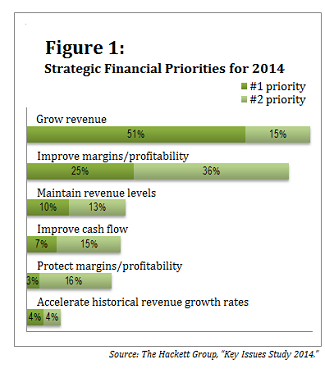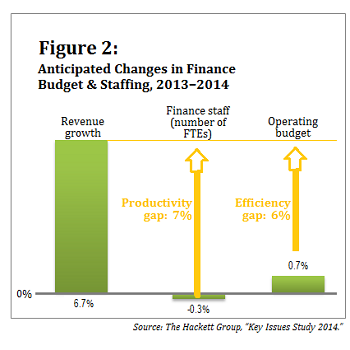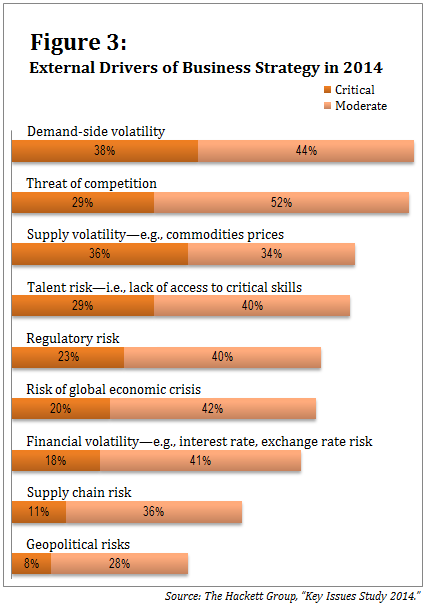 Ever since the financial crisis heightened companies'awareness of the importance of cash flow management, treasuryactivities—and treasury managers—have been inhabiting larger rolesin many organizations. “The focus on cash escalated during thecrisis; everyone was fairly tied up with that particular topic,”says Sherri Liao, practice leader for the enterprise performancemanagement and business intelligence executive advisory program atThe Hackett Group. “Cash is still something that companies arelooking at, especially organizations that have tighter paymentcycles. Also, we're finding that companies making larger capitalinvestments are being pressed to show how they're going to makethose cash outlays and returns on those investments because there'sa heightened sensitivity around risk now.”
Ever since the financial crisis heightened companies'awareness of the importance of cash flow management, treasuryactivities—and treasury managers—have been inhabiting larger rolesin many organizations. “The focus on cash escalated during thecrisis; everyone was fairly tied up with that particular topic,”says Sherri Liao, practice leader for the enterprise performancemanagement and business intelligence executive advisory program atThe Hackett Group. “Cash is still something that companies arelooking at, especially organizations that have tighter paymentcycles. Also, we're finding that companies making larger capitalinvestments are being pressed to show how they're going to makethose cash outlays and returns on those investments because there'sa heightened sensitivity around risk now.”
The 2014 “Key Issues Study” from The Hackett Group indicates,predictably, that cash is taking a back seat to revenues andprofits. When asked about their company's strategic financialpriorities for 2014, two-thirds of respondents said that growingrevenue is either their number-one or number-two priority. Nearlyas many cited improving margins and profitability as either numberone or number two. Improving cash flow scored quite a bit lower,with only 7 percent citing it as their top priority and 15 percentclaiming it's their second-most-important objective. (See Figure 1,below.)
|This doesn't mean, though, that cash management has fallen bythe wayside of the corporate agenda. “As organizations are able toimprove visibility to margin management and product orcustomer/channel profitability, they're going to have more of a wayto link that kind of information to cash flow,” Liao says. “It'sjust that now there's limited visibility into seeing whereperformance is coming from. Once that visibility becomes moretransparent, they're going to be able to make better cash flowanalysis, better leveraged insight into that area to give them lineof sight.”
|Performance management and business intelligence (BI)applications are often the means to achieve this type ofvisibility. They don't come ready to go off-the-shelf, butcompanies in industries that are focused on cash—such as financialservices—are investing resources to develop out their cash flowforecasting capabilities, says Liao. In fact, some are starting toincorporate cash flow forecasting into corporate processes aroundperformance management and performance analytics. “They'repointedly building out modeling capabilities to see how cash willchange based on demand, or if their business changes in certainways in certain markets,” Liao says.
| Finance teams typically deploy BI and analytics softwareto measure costs or to slice and dice profitability, such as bycustomer, product, channel, project, or other dimension. Theseareas are generally considered to fit within the purview offinance. But, says Liao, “often what we're seeing is that the BIapplications that companies are investing in will be extended intoother areas of the enterprise to tell a bigger story. The BIsoftware might be linked into things like marketing effectiveness.It might be linked into sales and operations. Linking these typesof data together becomes a lot more powerful in telling the storyof what's really going on with the enterprise, as opposed to justthe financial view of things. Because of their skill sets andtalents, finance is often looked to as providing the analytics forpretty much everything.”
Finance teams typically deploy BI and analytics softwareto measure costs or to slice and dice profitability, such as bycustomer, product, channel, project, or other dimension. Theseareas are generally considered to fit within the purview offinance. But, says Liao, “often what we're seeing is that the BIapplications that companies are investing in will be extended intoother areas of the enterprise to tell a bigger story. The BIsoftware might be linked into things like marketing effectiveness.It might be linked into sales and operations. Linking these typesof data together becomes a lot more powerful in telling the storyof what's really going on with the enterprise, as opposed to justthe financial view of things. Because of their skill sets andtalents, finance is often looked to as providing the analytics forpretty much everything.”
As companies' need for analytics grows, finance teams may findthat they lack the talent to keep up. Respondents to the HackettKey Issues study expect their company's revenue to grow by anaverage of 6.7 percent this year. Yet only 37 percent expect theiroperating budget to increase; the average change across allrespondents is a 0.7 percent increase. And only 27 percent expecttheir finance staff to grow; on average, respondents anticipatethat their staff size will actually shrink by 0.3 percent in 2014.(See Figure 2 on page 2.)
||Perhaps that's why the Hackett study also found that lack ofaccess to critical skills is a key driver of enterprise strategy in2014. Nearly a third of respondents said their company faces acritical talent risk, and more than a third said talent managementposes a moderate risk to their organization (see Figure 3,below).
|“Companies have reduced their deficiencies in the core financeskills, such as compliance management, running a revenue cycle, andexternal reporting,” says Jim O'Connor, principal in the financialadvisory practice at Hackett. “But our research shows that businessacumen and the ability to drive change—those softer partneringskills—are where companies are starting to look for help on theirjourney.”
| “For a long time, it was OK from a finance perspective tojust have a good sense for the numbers,” adds Liao. “Now we'reseeing demand for resources that truly understand what it takes torun the business, as well as to effectively model and bring inexternal factors to be considered in those models.” She saysHackett is seeing more and more companies adopt rotational programsto improve the business knowledge of their finance team. “It's notjust someone who has an MBA,” she adds. “People really need tounderstand what it takes to run different portions of the businessto tell the story of where the results are landing and where someof the risks are coming from.”
“For a long time, it was OK from a finance perspective tojust have a good sense for the numbers,” adds Liao. “Now we'reseeing demand for resources that truly understand what it takes torun the business, as well as to effectively model and bring inexternal factors to be considered in those models.” She saysHackett is seeing more and more companies adopt rotational programsto improve the business knowledge of their finance team. “It's notjust someone who has an MBA,” she adds. “People really need tounderstand what it takes to run different portions of the businessto tell the story of where the results are landing and where someof the risks are coming from.”
Instead of implementing rotational programs to improve thecapabilities of their treasury and finance staff, someorganizations are moving strategic activities into internal sharedservice centers, or even outsourcing them.
|Traditionally, finance functions have tended to outsourcetransactional activities, such as payables or expense processing.“That's where people start, whether they're outsourcing or movingto a captive center,” says Rich Cardillo, the principal responsiblefor Hackett's finance transformation consulting organization. “Theystart with the heavy transaction processing, those financeactivities that are focused on driving efficiency.”
|But recently, the types of activities being outsourced haveshifted. “Over time, people have moved additional activities withinfinance to either an outsourcing provider or a captive center—notso much for driving efficiency, but more for drivingeffectiveness,” says Cardillo. “That's when you start moving up thefood chain of finance activities into things like managementreporting, elements of planning, or elements of credit,collections, and receivables.”
|There's no rule for which functions companies should outsource;that depends on each organization's goals and risk tolerance. Somecompanies are looking at outsourcing tax reporting, internal audit,and even treasury. “Those kinds of functions end up being more of ablended model, where a company will leverage an outsourcing partnerfor select capabilities or support in different parts of the world,geographies in which it can't build a business case to developinternal capabilities,” says Tom Willman, associate principal inHackett's finance executive advisory practice.
|
Complete your profile to continue reading and get FREE access to Treasury & Risk, part of your ALM digital membership.
Your access to unlimited Treasury & Risk content isn’t changing.
Once you are an ALM digital member, you’ll receive:
- Critical Treasury & Risk information including in-depth analysis of treasury and finance best practices, case studies with corporate innovators, informative newsletters, educational webcasts and videos, and resources from industry leaders.
- Exclusive discounts on ALM and Treasury & Risk events.
- Access to other award-winning ALM websites including PropertyCasualty360.com and Law.com.
*May exclude premium content
Already have an account? Sign In
© 2024 ALM Global, LLC, All Rights Reserved. Request academic re-use from www.copyright.com. All other uses, submit a request to [email protected]. For more information visit Asset & Logo Licensing.







